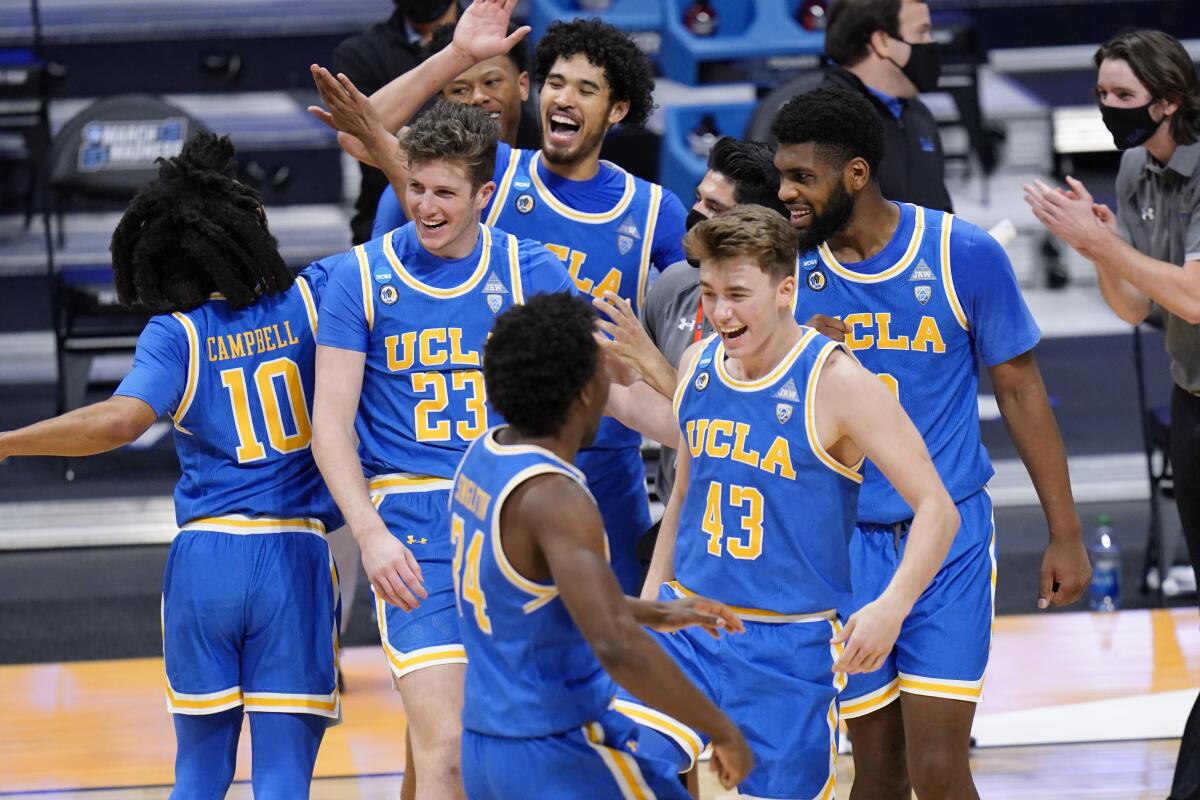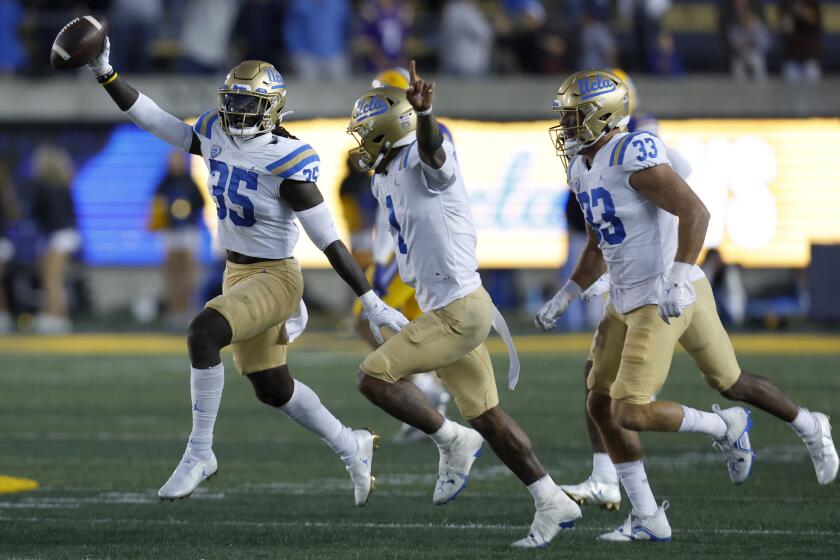Op-Ed: UCLA’s Big Ten move would be a boon for supporting student athletes

The proposed move of UCLA and USC from the Pac-12 conference to the Big Ten has rocked the college sports landscape. Many traditionalists lament the fact that age-old rivalries that were rooted in geographic proximity and convenience will no longer exist. However, that geographical alignment rationale has long since evaporated. What matters isn’t geography, but money. And the increased revenue that the schools stand to gain in shifting to the Big Ten is an opportunity for athletic departments to radically rethink how to support student athletes.
USC’s status as a private school appears to have simplified the decision-making process. However, the deliberation is much more complicated for UCLA, with its ties to the University of California system and its status as a public institution. The UC regents will vote Wednesday on UCLA’s proposed departure to the Big Ten. Some UC regents are worried there will be a loss of revenue for UC Berkeley by UCLA’s departure from the Pac-12.
But both UCLA and USC, along with other members of the Pac-12, have not been satisfied with the TV and media revenue payout from the conference in recent years. In May, when the conference released its 2020-21 financial results, each of its 12 member schools reportedly received just under $20 million for the year from the conference’s $344 million in revenue. That figure was down from about $34 million per school the year before. With the move to Big Ten, media contracts could yield close to a billion dollars a year, with some estimates suggesting that Big Ten members could receive anywhere from $65 million to $100 million a year.
Opponents of UCLA’s move to the Big Ten are hoping to block it at the UC Regents meeting; they will almost certainly lose.
UCLA’s athletic department is managing a three-year $100-million debt. Being in the Big Ten means the department would have more resources for student athletes and wouldn’t have to cut other sports as we have seen at universities elsewhere around the country.
Some opponents to the Big Ten migration have raised concerns that Black male students, in particular, would be most harmed by the decision. Black males make up about 14% of UCLA’s student athletes, according to data from UCLA’s admissions office, and Black male student athletes who remain at UCLA for five or six years have graduation rates that are equal to, if not higher, than Black males who are not student athletes. If there’s worry about the move harming Black male student athletes, that is cause for a much deeper and different discussion, because they face more complex challenges than which conference their school is in.
Critics of the Big Ten transition also say it will be bad for student athletes who would have to spend extra time and days traveling across the country to locations such as Maryland or New Jersey. They say money is being placed above the needs of student athletes. But the increase in travel days would be minimal when compared with current travel schedules and apply only to a few sports.
Moreover, the Big Ten will allow UCLA to provide enhanced resources that players are asking for to compete as elite students and elite athletes. For instance, the athletic department could double or even triple its investment in learning specialists, tutors, mentors and other academic support staff. By providing student athletes with more customized support, including virtual tutoring and mentoring, academic outcomes can improve significantly. More funding would allow academic support staff to travel with teams (which some already do) to ensure that students are getting the proper academic assistance needed while traveling.
A game changer would be if academic departments working with the athletic department commit to a flexible hybrid model for certain courses. We learned during the pandemic that many students preferred the online learning format for flexibility and convenience. Moving to a model with more online courses would essentially mean that student athletes would not miss much, if any, class time at all.
Is it OK when college sports are more or less run by TV networks? Is it cool that student athletics are in thrall to corporate behemoths?
Another area of investment could be in mental health support. Many college students, including student athletes, struggle with anxiety, depression and other issues. By hiring more therapists and mental health specialists who would work exclusively with student athletes, the university would be taking a bold stance to make student wellness and mental health a priority.
The influx of additional revenue could also create a basic stipend for all student athletes. Each person could receive a base-level income that goes beyond room and board, helping to cover the high cost of living in Los Angeles.
This is a time for UCLA to be a leader in truly prioritizing student athlete well-being holistically and creating a new model for athletic departments. If managed responsibly and transparently, the Big Ten revenue boon could go a long way in providing a positive experience for all student athletes.
Tyrone C. Howard is professor of education in the School of Education & Information Studies at UCLA. He is also director of the UCLA Black Male Institute and director of the UCLA Pritzker Center for Strengthening Children & Families.
More to Read
A cure for the common opinion
Get thought-provoking perspectives with our weekly newsletter.
You may occasionally receive promotional content from the Los Angeles Times.







